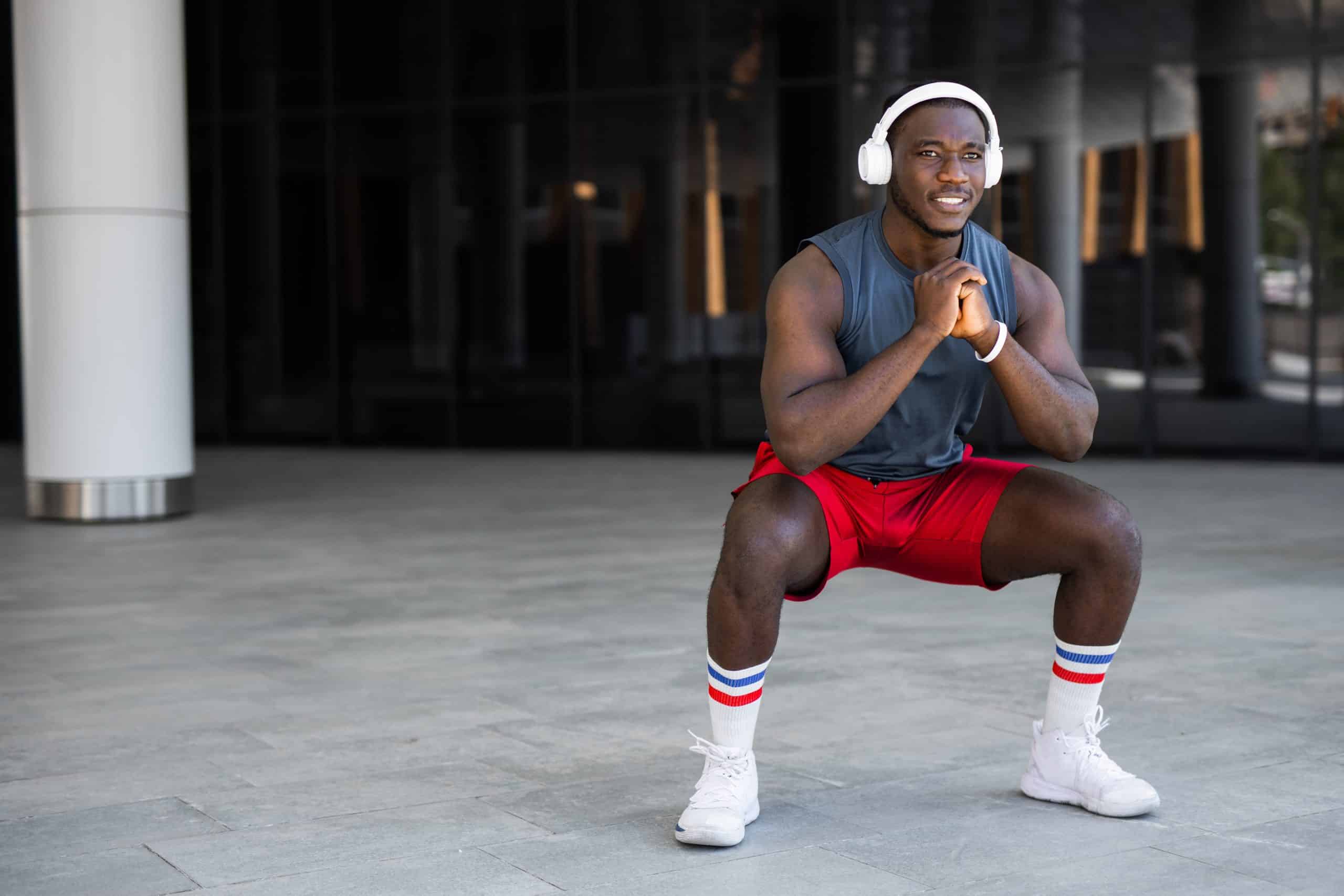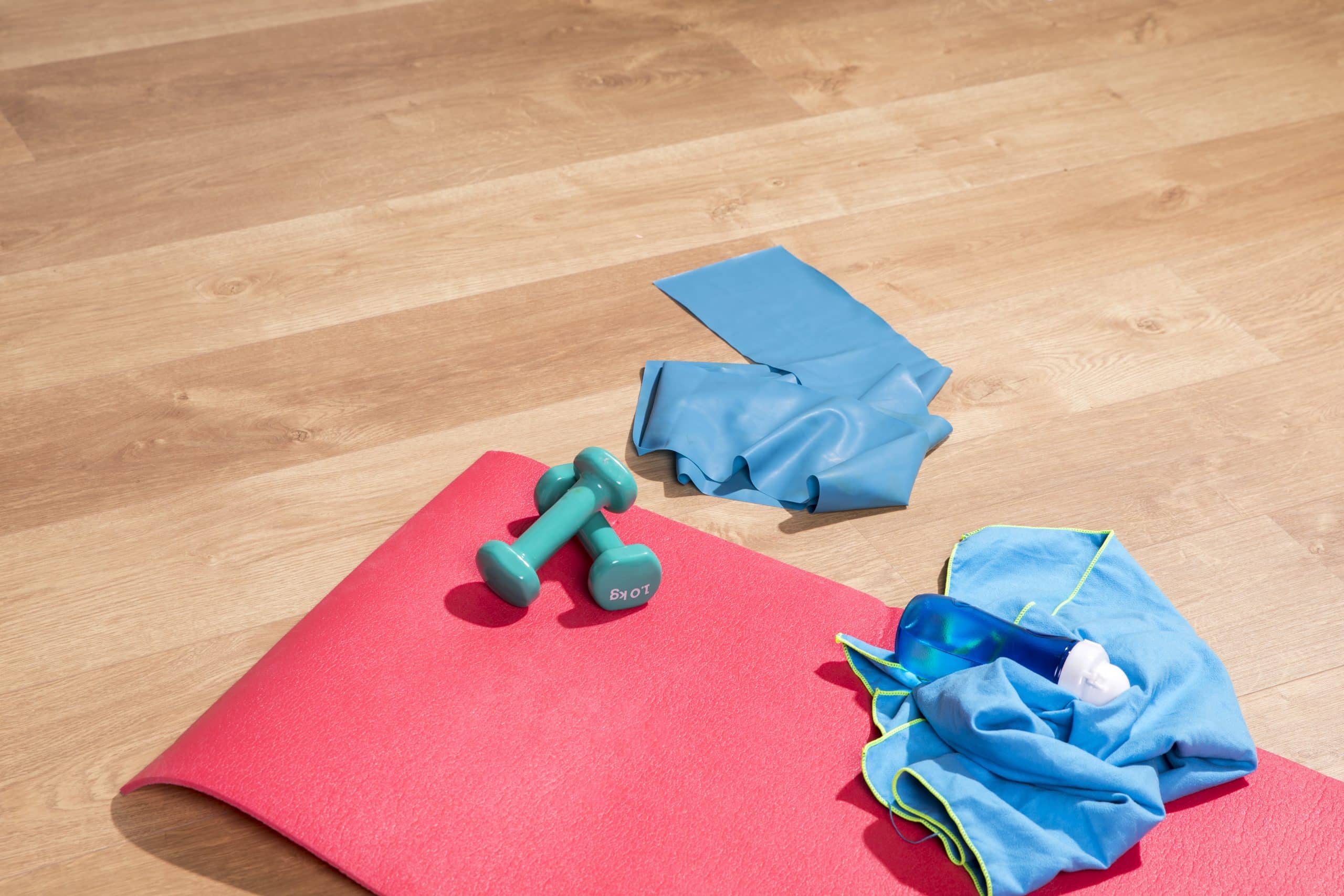
Do you often wish there were more hours in the day to fit in a good workout? Work, family, and other personal responsibilities can leave you with very little time to hit the gym. What if we told you you could perform a complete workout in just 15 minutes and actually see better results?
Say hello to high-intensity interval training (HIIT)! This isn’t just a fitness fad; it’s a workout method backed by science that makes optimal health and fitness much more achievable. If you’re short on time, trying to break through a fitness plateau, or simply looking for a more engaging workout, HIIT is a great option with a long list of health benefits.
Get ready to reach your fitness goals faster and in a smarter way with HIIT. But first…
What Is HIIT?
HIIT combines short, intense bursts of physical activity with brief rest periods or low-intensity exercise. This cycle is repeated throughout the workout, lasting 15 to 30 minutes, depending on your fitness level.
The high-intensity intervals elevate your heart rate to 80–95% of its maximum, ensuring you work hard enough to reap the benefits. The recovery periods help prepare you for the next round of intense activity.
HIIT is a time-efficient and versatile exercise suitable for people of all fitness levels. Workouts can be modified to suit beginners and advanced athletes alike. You can adjust the length of the high-intensity intervals, the intensity of the exercises, and the duration of the rest periods.
Another great thing about HIIT is it doesn’t require a gym membership or expensive equipment. You can do many HIIT workouts at home with minimal gear, making it an accessible option for those looking to get fit on a budget or with limited space.
Top 6 HIIT Benefits
Discover HIIT exercise benefits below and see how this form of exercise transforms your physical health, mental well-being, and overall quality of life.
1. Efficient Fat Loss and Weight Management
Achieve high-intensity fat loss with HIIT. Combining high-intensity bursts and recovery periods leads to more calories burned in a shorter time than traditional workouts.
This metabolic boost isn’t just limited to your workout session. HIIT stimulates excess post-exercise oxygen consumption (EPOC), or the afterburn effect, which means you keep burning calories after exercising. HIIT is an exceptional choice for those who want to lose weight and manage their body composition effectively.
2. Improved Cardiovascular Health
Doing HIIT the right way can be highly beneficial for your heart health. By pushing your heart rate to its upper limits, you’re strengthening your heart muscle. Regular HIIT sessions improve cardiovascular endurance, lowering heart disease risks such as hypertension and high cholesterol. Studies have shown that even a few minutes of high-intensity exercise is as effective as longer moderate-intensity aerobic workouts for improving heart health.
3. Increased Muscular Strength
One of the most notable benefits of high-intensity interval training is the ability to build and maintain muscle strength and endurance. Compared to aerobic workouts, HIIT workouts challenge various muscle groups, stimulating muscular adaptations that boost muscle strength over time. This process means you’re getting fitter and building a stronger, more resilient body capable of handling everyday tasks with greater ease.
4. Enhanced Blood Sugar Control
HIIT is a form of anaerobic exercise and has shown promising results in regulating blood sugar levels and improving insulin sensitivity. This is highly beneficial for individuals with type 2 diabetes, prediabetes, or those at risk. The intense exercise periods help quickly lower blood sugar levels, while the improved insulin sensitivity ensures that your body can manage glucose more effectively in the long run. Incorporating HIIT into your exercise routine is a proactive step toward managing blood sugar levels and preventing diabetes-related complications.
6. Better Mental Health
Engaging in regular HIIT alleviates symptoms of anxiety, depression, and stress by releasing endorphins, the body’s natural mood elevators. Moreover, the intense focus required during HIIT enhances cognitive functions such as focus, memory, and problem-solving abilities.

Read: Unlocking the Best Health Benefits of Anaerobic Workouts
Types of HIIT
High-intensity interval training (HIIT) is celebrated for its adaptability and versatility. There are many different HIIT exercises to try, so you’re never stuck doing the same, repetitive sets every session. You can pick workouts that you enjoy and are more comfortable with. As your strength and endurance build up, you can pick tougher exercises to keep pushing yourself forward.
Here are some common types of HIIT exercises:
1. Sprinting
A classic and straightforward form of HIIT, sprinting involves running as fast as possible for a short duration (20–30 seconds), followed by a recovery phase of walking, light jogging, or complete rest. You can perform this exercise in various settings, such as tracks, hills, or flat streets, offering a highly effective workout that improves speed, agility, and endurance.
2. Cycling
You can do HIIT while cycling with a road bike or stationary bike. Alternate between pedaling at a high intensity, with increased resistance, and recovery phases of easy pedaling. This variation enhances cardiovascular health and strengthens leg muscle and endurance, making it a comprehensive lower-body workout.
3. Bodyweight Exercises
This category includes exercises that utilize your body weight for resistance. Bodyweight exercises offer a no-equipment, accessible option for HIIT, making it ideal for those who prefer to exercise at home or lack access to gym facilities.
In a dynamic HIIT circuit, you can sequence exercises such as burpees, jump squats, high knees, and mountain climbers. Such movements target multiple muscle groups and promote muscular strength and endurance.
4. Kettlebell Workouts
HIIT sessions with kettlebells combine cardiovascular, strength, and flexibility training. Movements like kettlebell swings, snatches, and goblet squats are perfect for HIIT routines, as they engage the entire body, particularly the core, glutes, and hamstrings. The versatility of kettlebells allows for various high-intensity exercises that improve power, endurance, and balance.
5. Swimming
HIIT swimming workouts include sprinting a single lap at maximum effort followed by a slower recovery lap. This form of HIIT is excellent for those who prefer a low-impact option and want to build endurance and muscular strength without the wear and tear on joints.
6. Jump Rope
Jumping rope is a simple yet powerful HIIT exercise you can do almost anywhere. Alternate between high-intensity jump rope techniques, such as double unders or high knees, with slower-paced intervals or rest periods. Incorporate this into your routine for a challenging and fun HIIT workout that improves coordination, agility, foot speed, and cardiovascular health.
7. Tabata Training
Tabata is a popular form of HIIT that involves 20 seconds of high-intensity exercise, followed by 10 seconds of recovery, repeated for 4 minutes (8 cycles). This method is known for burning a high number of calories in a short amount of time. Tabata exercises include sprints, bicycle crunches, push-ups, and other high-intensity movements.
Sample HIIT Workouts
Here’s a simple yet effective 20-minute HIIT workout that requires no equipment, making it perfect for beginners. Before starting, make sure to warm up with dynamic stretches or light jogging.
Warm-Up (3 minutes)
- Jumping jacks: 60 seconds
- Dynamic stretching (leg swings, arm circles): 2 minutes
HIIT Circuit (Repeat 4x, 4 minutes per round)
- High Knees: 30 seconds
- Rest: 15 seconds
- Burpees: 30 seconds
- Rest: 15 seconds
- Mountain Climbers: 30 seconds
- Rest: 15 seconds
- Jump Squats: 30 seconds
- Rest: 1 minute (after completing each round)
Cool Down (3 minutes)
- Light jogging or walking: 1 minute
- Stretching focusing on major muscle groups: 2 minutes
FAQs about HIIT
1. Can you do HIIT every day?
Doing HIIT workouts every day is not recommended as your body needs time to recover. For best results, aim to incorporate HIIT workouts into your routine 2–3 times a week, allowing for rest or lower-intensity exercise on other days to prevent overtraining.
2. Is feeling dizzy or nauseous during or after HIIT normal?
Feeling dizzy or nauseous during or after a HIIT workout can happen, especially in beginners or if you push too hard too fast. This can be due to various factors, like dehydration, insufficient fueling, or simply adjusting to the intensity of the workout. It’s essential to listen to your body and modify the intensity as needed.
3. Does HIIT burn fat?
HIIT is highly effective for burning fat and can significantly contribute to weight loss efforts, especially when combined with regular sleep and a balanced diet.
4. Is HIIT suitable for beginners?
While HIIT is intense, you can modify workouts to suit beginners. It’s important to start slow, listen to your body, and gradually increase intensity as your fitness level improves.
5. How long should a HIIT workout last?
HIIT workouts are incredibly effective, even when they’re short. A typical session lasts 5 to 30 minutes, including warm-up and cool-down.
6. Is HIIT good for your heart?
Yes, HIIT is great for heart health. It helps regulate heart rate and blood pressure, particularly in overweight individuals or those with hypertension. HIIT also improves the elasticity of blood vessels and boosts heart efficiency, making your cardiovascular system more resilient. However, anyone with existing heart conditions should consult a doctor before starting HIIT.
Get Started with HIIT
Jump into a HIIT routine with ease! Start with shorter workouts and gradually increase intensity and duration as your fitness improves. Listen to your body and consult a professional if you need clarification on a particular exercise.
While HIIT is generally safe for most people, those with pre-existing health conditions (such as heart disease, high blood pressure, diabetes, PCOS, or joint problems) should consult a healthcare provider before starting a HIIT program. Safety should always come first.
Our expert medical team at Premier Health and Wellness Center personalizes exercise plans to accommodate individual fitness levels and health needs. If you’re looking for Bermuda doctors to assist you in your weight loss journey, you’re in the right place.
We focus on creating individualized weight loss plans that aim for lasting results and promote long-term health and wellness. We’ll help you reach a healthy weight by integrating exercise, nutrition, lifestyle changes, and behavioral modifications.
Schedule an appointment online or call 441-292-5111 to get started!
